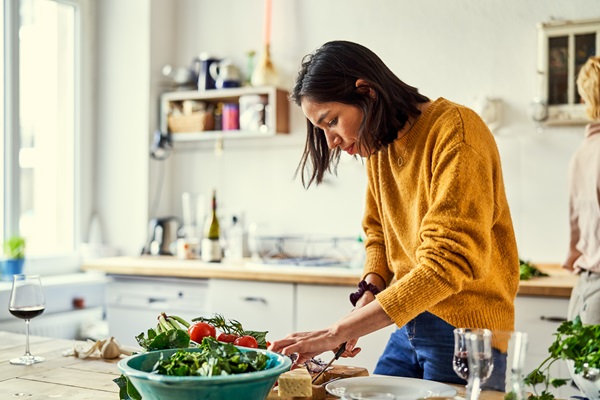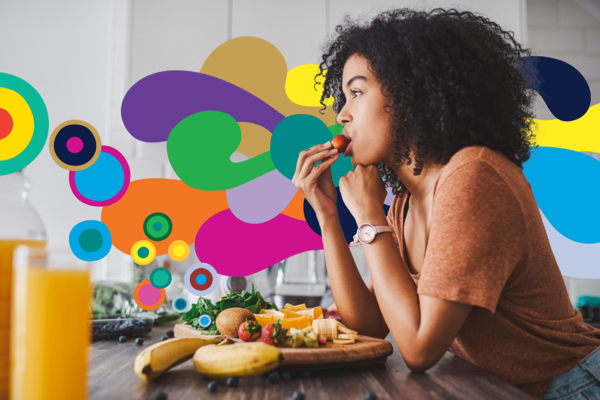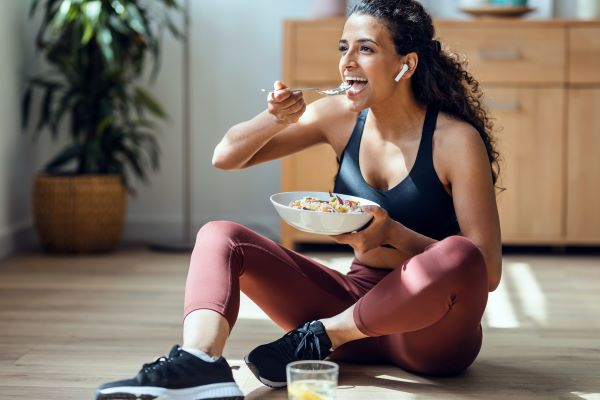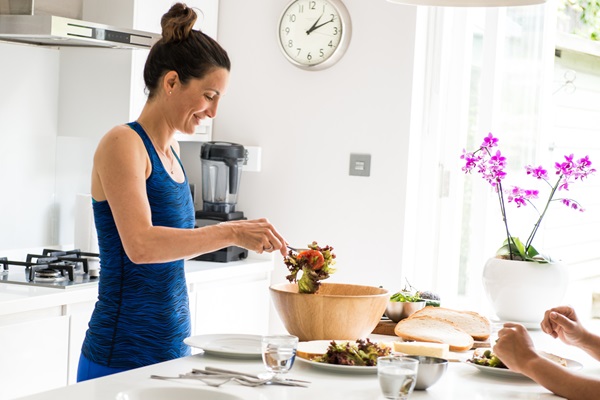-
Whether you play sport, run, or hit the gym, one of the foundations of peak performance and recovery is good nutrition.
As an active woman, something you’ll want to stay particularly mindful of is your iron status – to make sure your body is getting enough iron to perform in the way you need it to.
Dr Adrienne Forsyth, Associate Professor and Research Lead in Nutrition & Dietetics at Australian Catholic University says iron deficiency is a prevalent issue for women.
“In the general Australian population, it [impacts] about a third of women in their childbearing years – so it's really common,” she says.
If you have a period, you’re more likely to have low iron – especially if you experience heavy periods.
Let’s take a look at why iron is so important for active women, and how you can up your intake.
What is iron deficiency?
Iron deficiency occurs when you don’t have the levels of iron you need in your body.
Low levels of iron can impact our energy levels, cognitive function, mood and physical performance. Our bodies can’t make iron, so we need to consume it.
Anaemia is a more severe version of iron deficiency.
How does a lack of iron impact athletic performance?
One of the main things we need iron for is to make new red blood cells. Our red blood cells carry oxygen around in the bloodstream.
“If we're deficient in iron, and particularly if we're so deficient that we develop anaemia, and a reduced ability to carry oxygen in the blood, we're going to notice that it has an impact on our sporting performance,” says Dr Forsyth.
If that’s the case, you might feel tired, sluggish, or puffed during exercise.
Why can iron deficiency and anaemia occur in active women?
“The biggest factors that influence iron status are dietary intake of iron and menstrual losses. And that applies for all women [regardless of activity levels],” says Dr Forsyth.
“Women who are particularly active might lose some additional iron through intestinal bleeding and what we call foot strike haemolysis, which is tiny broken blood vessels in the foot from pounding the pavement. Those are minor, though.”
There are also physiological responses to exercise that reduce iron absorption, Dr Forsyth says.
After we exercise, our bodies have a short inflammatory response that causes a rise in hepcidin – a hormone that regulates iron. When we have higher hepcidin levels, we don't absorb iron as well.
“So, if we tend to eat most of our iron rich meals in that phase, two to five hours after exercise, then we're not going to be getting as much iron from our food than if we hadn't had been exercising,” explains Dr Forsyth.
What are the symptoms of iron deficiency in active women?
Dr Forsyth says some of the key symptoms to watch for are:
- fatigue, reduced concentration
- weakness, shortness of breath
- headache, irregular heartbeat.
READ MORE: Training? Expert tips to help you get your nutrition rightTips to help prevent and treat iron depletion
“The main thing to focus on is making sure there's enough iron in your diet,” says Dr Forsyth.
“The recommended amount for women in childbearing years is 18 milligrams a day, which can be challenging to meet.”
She adds that, even though you may be consuming a lot of iron-rich foods, your body may not be absorbing it as well as it needs to.
Consuming a source of Vitamin C – such as citrus, fruit, tomatoes, or capsicum – along with iron can help optimise absorption from plant-based sources. Eating calcium with iron, on the other hand, may decrease iron absorption.
Dr Forsyth suggests, if you have any signs or symptoms of iron deficiency, go and see your GP and get tested.
“Sometimes, iron deficiency occurs just because people haven't had enough iron in their diet. But there could be other things,” says Dr Forsyth.
“There could be pathophysiological issues related to iron absorption or blood losses that are not being accounted for somehow in the body.
“So, we want to make sure that gets checked out first before we proceed with anything else in terms of management of iron deficiency.”
Dr Forsyth’s top tips for adding more iron to your diet
- Best sources: Red meat, eggs/poultry, fortified cereals, legumes, spinach/broccoli
- Aim to include a good source of iron at two meals per day
- Breakfast: Eggs, spinach, wholemeal bread, fortified breakfast cereals; add tomatoes or a sliced orange to enhance absorption
- Lunch: Add a good protein/iron source to salads and sandwiches, such as sliced cold meat/chicken, hard-boiled eggs, tinned beans
- Dinner: Make the iron source the hero; search for yummy recipes that include iron-rich foods and consider leveling up your iron source or your portion size.
The Sports Dietitians Australia website is a good source of inspiration for iron-rich snacks and meals. If you want to check how much iron is in specific foods, you can visit the Australian Food Composition Database.
What about iron supplements?
If you aren’t getting enough iron from diet alone, your GP may recommend supplements. It’s important you have a conversation with your doctor before taking them.
If you are taking supplements, Dr Forsyth says:
- Commonly this is about 100mg of elemental iron, plus a source of Vitamin C, like a glass of orange juice
- Avoid taking close to coffee/tea and sources of calcium (e.g. dairy foods) that reduce iron absorption
- Taking a supplement in the morning (before or just after exercise) can maximise absorption as this is when hepcidin is lowest.
Listen to your own body
Be mindful that recommendations are general, and we all have varying needs.
“Some people might not need quite as much iron. Some people might need a lot more … some people will absorb iron more readily, others less readily,” says Dr Forsyth.
“So, while it's important to be aware of recommendations, the best thing to do is to monitor how you're feeling and go speak to your GP and get tested if you're at all concerned, because that way you'll know at the end of the day if you are getting enough iron.”
READ MORE: Don't let breast pain ruin your run or explore more women's health articles
The Medibank Better Health Research Hub has partnered with and provided funding towards La Trobe University’s TRAIL W project. Find out more here: MBHRH Research Projects and Partnerships | Medibank and Trail W – HerSport.
How to keep your iron levels up as an active woman


Eat better, get rewarded.
You could earn points for your healthy eating habits with Live Better rewards, be it eating more fruit and vegetables, drinking more water or even cutting down on sugar! Then redeem it for exciting rewards from partners like HelloFresh, THE ICONIC and more.
For eligible Medibank members with hospital and/or extras cover only. T&Cs apply.


